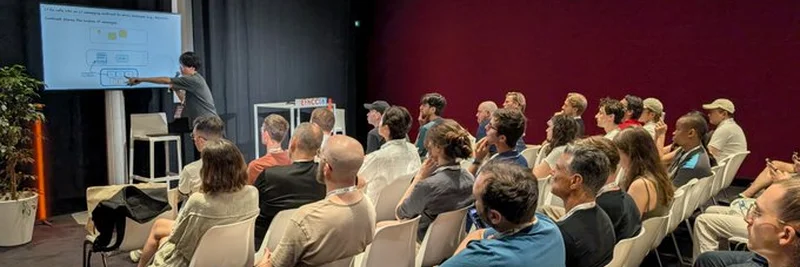Hey there, crypto enthusiasts! If you’ve been keeping an eye on the latest blockchain innovations, you’ve probably heard about rollups and their role in making blockchain tech faster and more efficient. A recent post from Nethermind at the ETHCC (Ethereum Community Conference) on July 1, 2025, caught our attention, and we’re excited to break it down for you. Let’s dive into how based rollups are revolutionizing blockchain composability and what it means for the future of decentralized finance (DeFi).
What Are Based Rollups?
First things first—let’s clarify what rollups are. Rollups are a Layer 2 (L2) scaling solution for blockchains like Ethereum. They work by bundling (or “rolling up”) multiple transactions off-chain and then submitting a summary to the main Layer 1 (L1) blockchain. This process reduces congestion on the main network, lowers gas fees, and speeds things up. There are two main types: Optimistic Rollups and ZK-Rollups (Zero-Knowledge Rollups), with the latter using cryptographic proofs to ensure security.
The term “based rollups” refers to a specific implementation where the L2 solution is tightly integrated with the L1 blockchain, relying on its security and data availability. This integration is a game-changer, and Nethermind’s presentation at ETHCC highlighted just how powerful it can be.
Seamless L1 and L2 Interactions
One of the coolest takeaways from the tweet is the idea of moving from L1 to L2 and back within the same “slot.” Imagine depositing funds into an L2, executing a decentralized exchange (DEX) trade, and returning to L1—all in one smooth flow. This seamless user experience is a big deal because it bridges the gap between the secure but slower L1 and the fast, cost-effective L2.
For example, you could deposit ETH into an L2 like StarkNet, swap it for a meme token (yes, we’re at meme-insider.com, so we love a good token story!), and then move your profits back to L1 without breaking a sweat. This efficiency is thanks to the dependency and conditioning mentioned in the post, which are key to making these layers work together like a well-oiled machine.
The Role of Composability
Now, let’s talk about composability—a fancy term that simply means different blockchain components can work together seamlessly. In DeFi, composability allows smart contracts from various protocols to interact, letting developers build complex applications. Think of it like LEGO bricks: you can combine them in endless ways to create something new.
The Nethermind post emphasizes that based rollups enhance composability by enabling L1 and L2 to function as a unified system. This means you can use L1’s security while leveraging L2’s speed to create innovative DeFi products. For instance, a DEX on L2 could integrate with an L1 lending protocol, offering users a one-stop shop for trading and borrowing—all made possible by rollup technology.
Why It Matters at ETHCC
The packed house at ETHCC, as shown in the image, tells us this topic is buzzing! ETHCC is a hub for Ethereum developers and enthusiasts, and a presentation by linoscope on based rollups drew a crowd for a reason. It’s not just tech talk—it’s about solving real-world problems like blockchain scalability and user experience. As meme token enthusiasts, we see this as a potential boost for projects that rely on fast, cheap transactions to gain traction.
The Future of Blockchain Scalability
So, what’s next? Based rollups are paving the way for a more scalable blockchain ecosystem. By improving interoperability between L1 and L2, they’re making it easier for developers to build and for users to enjoy DeFi apps. Plus, with enhanced privacy from ZK-Rollups and lower costs, it’s a win-win for everyone—especially those diving into the wild world of meme tokens!
If you’re a blockchain practitioner looking to level up, keep an eye on rollup developments. They’re not just a trend—they’re a foundation for the future. Want to learn more? Check out the Nethermind link shared in the tweet for a deeper dive.
What do you think about this rollup revolution? Drop your thoughts in the comments—we’d love to hear from you!

